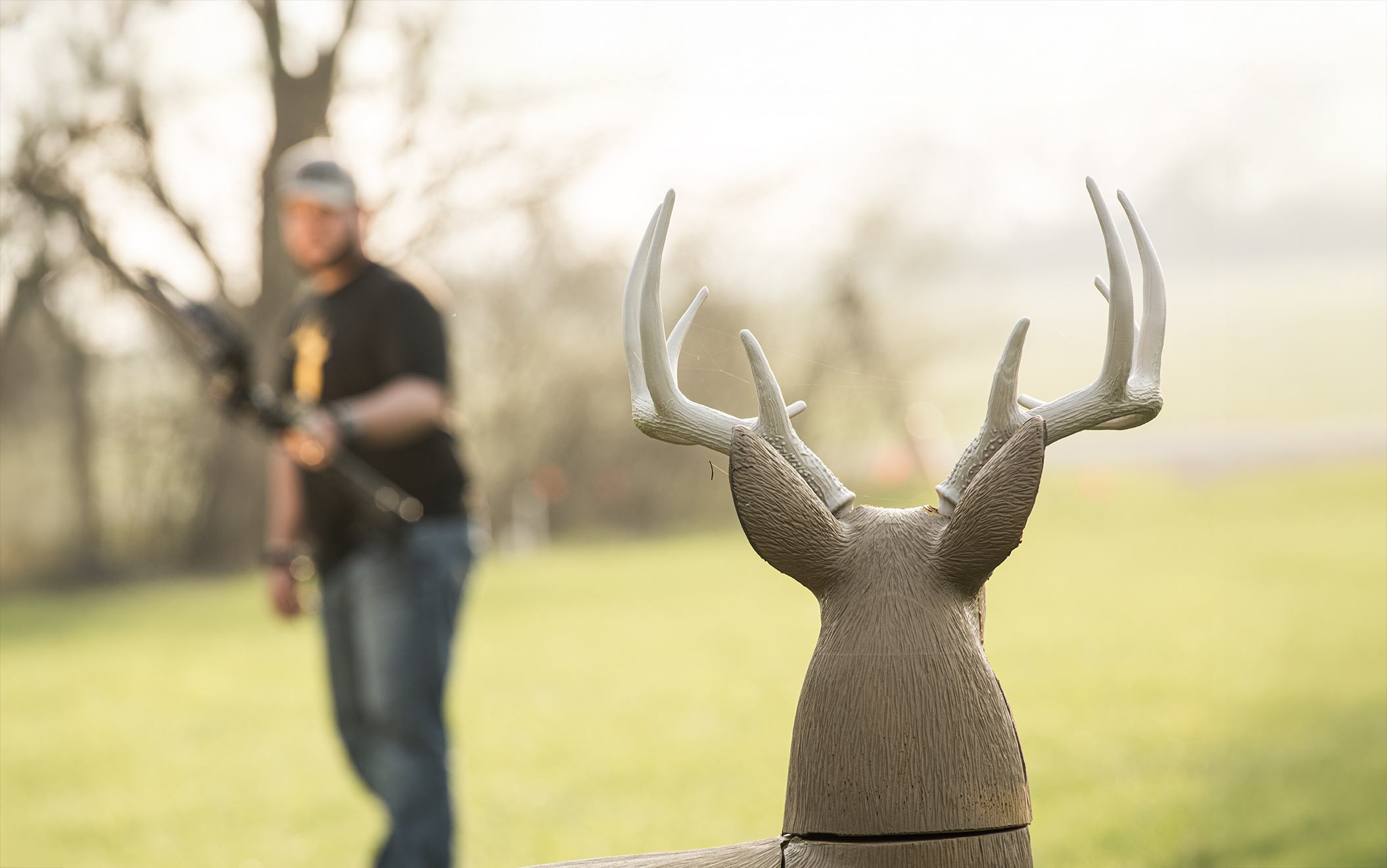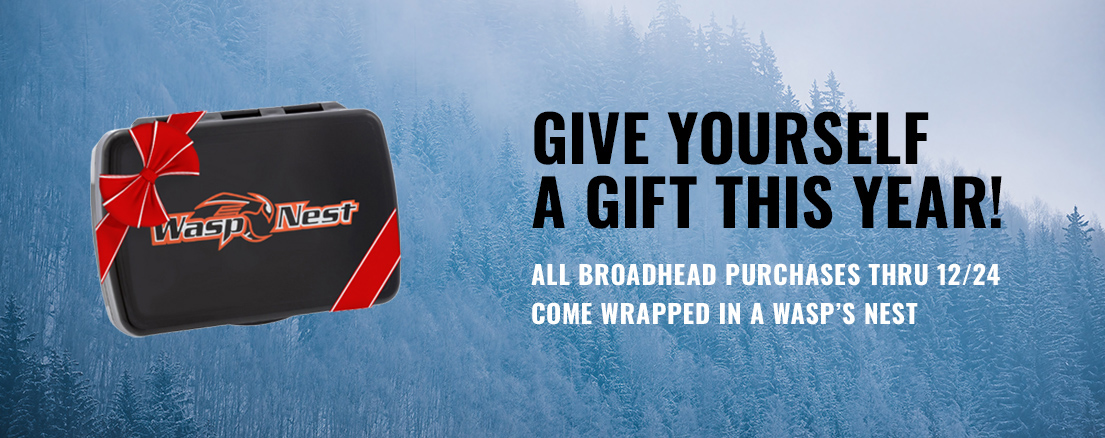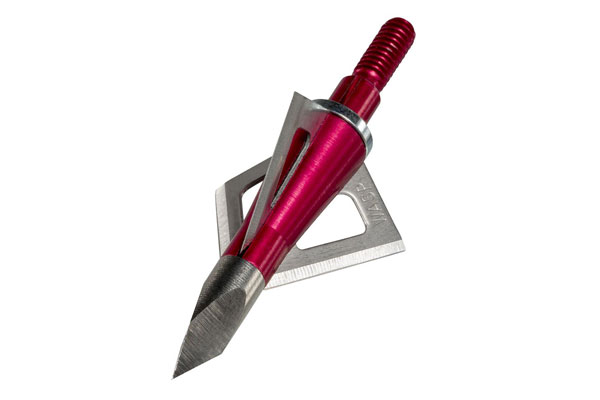How to Become a Better Bowhunter with 3-D Targets
Quality practice under realistic hunting scenarios will make you a more effective hunter
It’s the middle of summer across North America, and many of us are enjoying some fishing, gardening, barbecuing, and baseball games. Hopefully, you’ve carved some time out of your busy schedule for a little archery practice, too. After all, these are the critical weeks leading up to a new bowhunting season.
There’s nothing wrong with shooting arrows into the spots on a bag target, but to truly prepare for shots you might encounter while bowhunting, it’s best to set up the most realistic practice scenarios that you possibly can. One of the best ways to do that is with 3-D targets. Whether you’re practicing at home or on an outdoor course, here are some tips to make your 3-D practice as beneficial as possible.
BACKYARD DRILLS
If you don’t already own a 3-D target, there are lots of great options that suit a variety of budgets. Shop for targets that replicate the species you hunt the most. For most bowhunters that means a whitetail target, but there are all sorts of targets out there made to look like elk, mule deer, antelope, hogs, turkeys, and small game. Velociraptor tags are tough to come by, we know, but there are even dinosaur targets out there if you want to mix in a little Jurassic-era fun.
Generally, more expensive targets are of higher quality, being made from foam that self-heals once arrows are removed and lasts longer in the elements. Most high-end targets have replacement vital sections, and replacing the core when it’s worn out is less expensive than buying a new target. Value priced deer targets start around $100, but obviously expect to pay more for higher quality.
Once you have a target or two, don’t get stuck in a routine of shooting at just 20, 30, and 40 yards in an open lawn. Mix it up, with shots at 23, 35, 37, or 41 yards. Challenge yourself to eyeball distances and take shots quickly without ranging them first. Obscure targets with brush, and practice from various shooting positions, including from your knees and while leaning from behind cover, if you’re a spot-and-stalk hunter. If you hunt from a treestand, put on your safety harness and practice shooting from one, if possible. If you don’t have an extra stand handy, shooting from a balcony or other safe elevated position helps you become familiar with proper shooting form from heights and downward angles.
If you bowhunt from ground blinds, pop one up and shoot your target from it. You’ll have to kneel or sit in a chair, which is entirely different from standing upright. You’ll likely identify some mistakes and have the opportunity to rectify them before the bowhunting season. Most find it more difficult to draw their bow while seated or kneeling, so you’ll want to get accustomed to that. Also, be attentive to things like blind windows and arrow clearance. And finally, practice early in the morning and late in the evening, when game animals are most likely to move. Just because it’s still legal light doesn’t mean you’ll be able to see clearly through your peep sight. It’s better to know your limitations ahead of time than to take an iffy shot on a buck.
ADD SOME FRIENDLY COMPETITION
All of that solo practice is great, but there’s a big difference in shooting at foam and shooting at a live animal. While you can’t prepare for the dump of adrenaline that pressure creates, you can help yourself by adding in some competitive pressure. Invite a few of your bowhunting buddies over for some shooting practice, and keep score and even consider adding some friendly wagers to the mix. The idea is to have a good time, but to also maintain focus when there’s a little something on the line.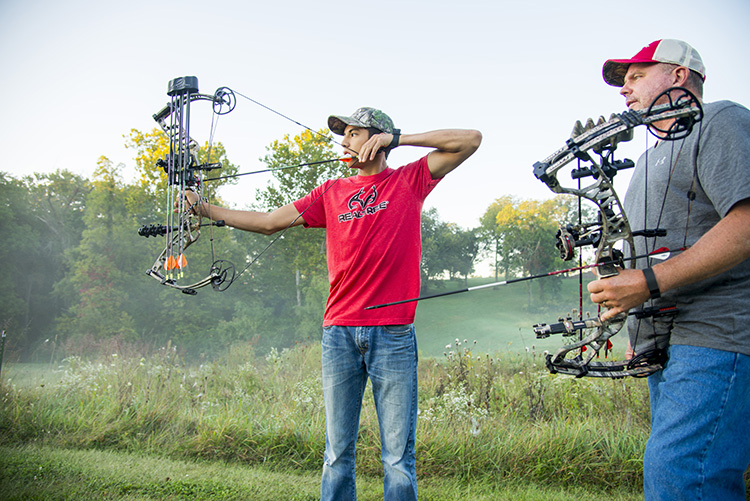
Shooting with buddies and even with friendly competition adds some pressure and fun to your practice routine.
To take that competitive aspect to the next level, consider attending some 3-D shooting competitions. Many clubs and some archery pro shops host weekend events where archers walk an outdoor course and shoot at a variety of targets, usually 20 or 30 total, set at different ranges. Many of these shoots have varying classes, including youth and traditional classes, but most times you’re competing for a club trophy and bragging rights at most.
Larger sanctioned shoots such as Archery Shooters Association (ASA) and R100 events can be venues for serious competition, but even those shoots usually have amateur classes for bowhunters who just want to get in some valuable practice and have a good time.
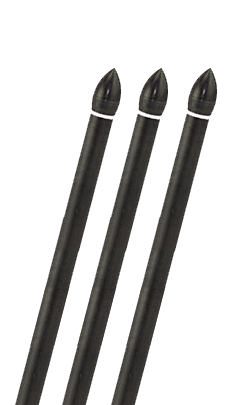
Quite a few of those events prohibit the use of rangefinders, which can add another degree of challenge to the mix.
When shooting 3-D targets, it’s easy to get caught up in aiming at the scoring rings, especially if you’re shooting against a buddy or even in a tournament. That’s OK, but do so knowing that the 12-ring isn’t always located in the very best place to shoot an animal, particularly depending on how the target is angled. The goal of every bowhunter should be to hit the center of the lungs.
While you’re practicing, don’t forget to stock up on plenty of good Wasp Field Points, which are available in 100- and 125-grain options in just about any thread pattern you might need. The time clock until bow season is ticking. Will you be prepared when it arrives?
— Story by Wasp Archery staff; target image by John Hafner; archers image by Bill Winke
View All Posts